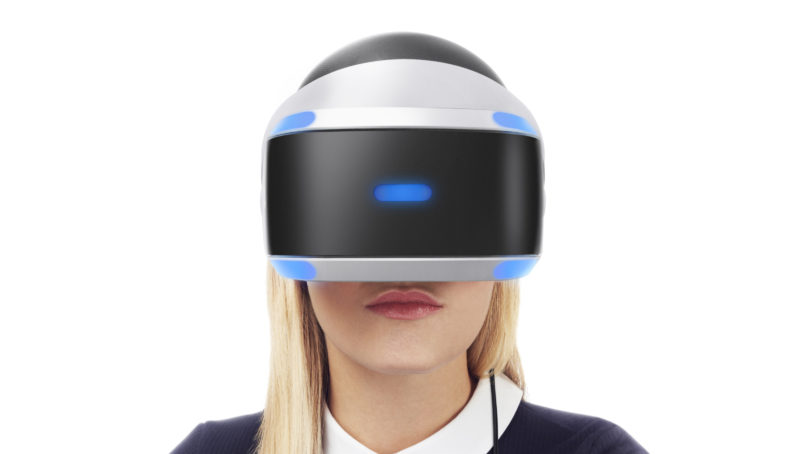
Short Version: It’s pretty great. Out of all of the VR headsets I’ve worn, this is the most comfortable, fun and easy to use of all. The only thing that holds it back is the outdated PlayStation Camera and Move controllers that sometimes don’t track certain movements reliably. The tech could be better, but for $400, it works pretty well and contains all the games I want to play that you can’t see on Oculus Rift or HTC Vive.
Long Version: Virtual Reality has finally arrived to a more mainstream market in the form of PlayStation VR. Prior to that, you had other platforms like the HTC Vive and the Oculus Rift, but they were expensive to the point that it was more of a niche thing for people with lots of money to get into. Now, we have a much more affordable headset coming from a recognizable company that has the clout and money to be able to reach a wider audience, truly bringing virtual reality to the forefront and in people’s couches. All of this sounds well and good, but it doesn’t come without some shortcomings that stop it from being the best purchase out there. However, regardless of that, I can safely say that if you are in any way interested in virtual reality video games and already have a PS4, this is the one to get.

Strap On
The PlayStation VR comes in two different forms, one of them being a regular $400 box that only contains the headset, the processor unit and a demo disc. There is also a $500 Launch Bundle that contains the required PlayStation Camera and the optional pair of Move controllers. Even though most of the games available in the launch lineup are fully playable with the Dualshock 4, it is highly recommended you get the 2 Move controllers to get the full experience, especially since there are a couple of really good games out there that will require them. No matter what though, you will need the PS Camera in order to have all of your stuff be tracked at all. Even though all of these items have their own integrated motion controls, the camera pretty much determines how your experience will go. On top of that, you will need to always have the processor unit connected to the PS4 for the headset to work at all, which works as a splitter to show the video feed on your television.
As you can imagine, every single one of these things come with their own cable to hook up to either the PS4 or the processor unit, which can add up to a confusing spaghetti monster of wires. In my personal case, I already have a ton of wires in my room for all the consoles and other stuff I have hooked up, so I don’t mind adding a little bit more. However, for people that are planning to keep this in their living room or in some sort of home theatre setup, this will definitely stick out like a sore thumb. The final look of this setup is definitely an image of a company that tried to make the most out of what they had, rather than using completely new technology that would then be more expensive, turning it less appealing. Fortunately, the package comes with a booklet containing some very clear instructions on how to hook everything up, so don’t worry about it taking up most of your time. You’ll be able to begin your VR experience way faster than you might think.

You’re Head Is Set To Go
Let’s talk about the main attraction: the headset. You definitely don’t need me to tell you that, at the time of this writing, this is by far the best headset in the market right now. This is due to its elegant, almost futuristic design, its well-distributed weight, and unmatched comfort levels. Instead of having some straps that push down on your head like other headsets, the PSVR decides to instead create a circular “halo” design that wraps around the dome of your skull. Here is where most of the weight is distributed, rather than having it all on the headset visor, making the whole thing fairly balanced and light, despite this technically being the heaviest headset of the big three.
Putting the headset on is the easiest thing in the world as well. There is a button in the back that allows you to stretch the sides to fit your head size. After that, you can tighten it with a convenient wheel. There is also a button below the visor that allows you to adjust the distance between your eyes and the display, which is great for people like myself who wear glasses. Every single feature in this headset is already leaps and bounds better than the other competing products, considering they’re all pretty much just the visor and a bit of black strap that can feel uncomfortable or provide neck pain due to weight imbalance. With PSVR, it takes all of that into account and thinks of every possible thing you could have a problem with and tries to fix it. After putting it on and adjusting it the way you want, you can enjoy playing games in VR. How does it compare other VR headset? Well…it succeeds in many aspects, but falls short in others in a very noticeable way.

Compare And Contrast
First things first, the display. Even though it has a competent 1080p OLED screen, it’s still less than Oculus or Vive. While the other two headsets have 110 degrees of field of view, the PSVR only has 100. Even though only VR fanatics that have used all of these products will notice this, I still think it is important to acknowledge these facts. On top of this, the visual fidelity could use some improvements, for my experience consisted of many good-looking games that were met with jaggy graphics and many blurry edges. You can definitely adjust your headset to make all of this go away, but there will always be something in the corner of your vision that won’t look quite right. When recording footage for a video, this will not be easy to notice, but one’s eyes seeing it through the visor is a different story, especially when factoring in how good or bad your vision is. When you’re in the middle of the action, you won’t think about this too often, but it’ll definitely rear its head once in a while.
Considering its lower price, it is understandable that Sony made these concessions to prevent the PSVR from getting too expensive. However, this is slightly less forgivable when having to face some of the struggles involving the PlayStation Move controllers and the camera. There have been many divisive reports from people talking about their experience with these devices that have ranged from unplayable to decent. With the time I spent with it, it worked fine, with the exception of a few games that needed me to move around more than usual. Even then, you can literally see the limits of the outdated camera and motions controllers from the moment one’s virtual hand disappears after stretching out to reach something or having the entire world shake from the camera not being able to track you properly. This is the consequence of taking something that wasn’t meant for VR and tried to make them do something much more advanced than what they were intended for, which was mostly live streaming and playing fun little games about racing down a hill on office chairs.

Old, But Still Kickin’
However, even though I say this with negative connotations, there are also a lot of positive ones I can give. I can say that it’s strange to have 6 year-old hardware try and pull off something like this, but I can also say that it’s very impressive that these relatively old pieces of tech are capable of creating a VR experience that can hold its own to the much more modern Oculus or Vive. Obviously, I would’ve liked newer and improved hardware (and maybe we will get it in the future, depending on how well the platform sells), but the fact that the majority of the time it works pretty well is astounding. And besides, most of the games that are currently out are seated experiences that are compatible with the regular Dualshock 4 controller anyway, so you won’t really find any of these problems, including motion sickness until you actively go and look for them.
Speaking of which, the final thing that I would like to address is probably the biggest elephant in the room I have ever had to face: motion sickness. Very similar to the motion tracking issue, the reports that many other websites have brought to the table have been more black and white than a film from the 1940s. There are some people out there that are completely incapable of playing anything in VR for more than 5 minutes before they vomit, and then others that can play for hours and not feel anything. For me, I belong to the latter, in which I only felt a bit of motion sickness after some very extended use where I played with a variety of different games and apps.

Not The Best, But That’s Okay!
However, aside from a couple of games like Rigs and Ocean’s Descent, there really isn’t any specific game that made me feel motion sick, but rather the accumulated time I put into doing all of that in one session. Of course, I do that because I review games and spent way more time with the device than anyone else will, so I wouldn’t recommend that for anyone. I guess what I can say is that your mileage may vary. Everybody’s body works in a different way and it is up to you to be aware of where your personal limits are, to which then you’ll be able to determine how your experience will turn out.
Overall, I think PlayStation VR is pretty gosh darn sweet. It has some problems, but works in an impressive way most of the time. The games available at launch are very promising and the hardware that works with it is competent, comfortable, easy to use and affordable. Even though this is not the most technologically advanced piece of hardware out there, it is still a great entry level for a more mainstream audience that want to give virtual reality a shot without spending an arm and a leg for it. Not the best, but it’s good enough.











